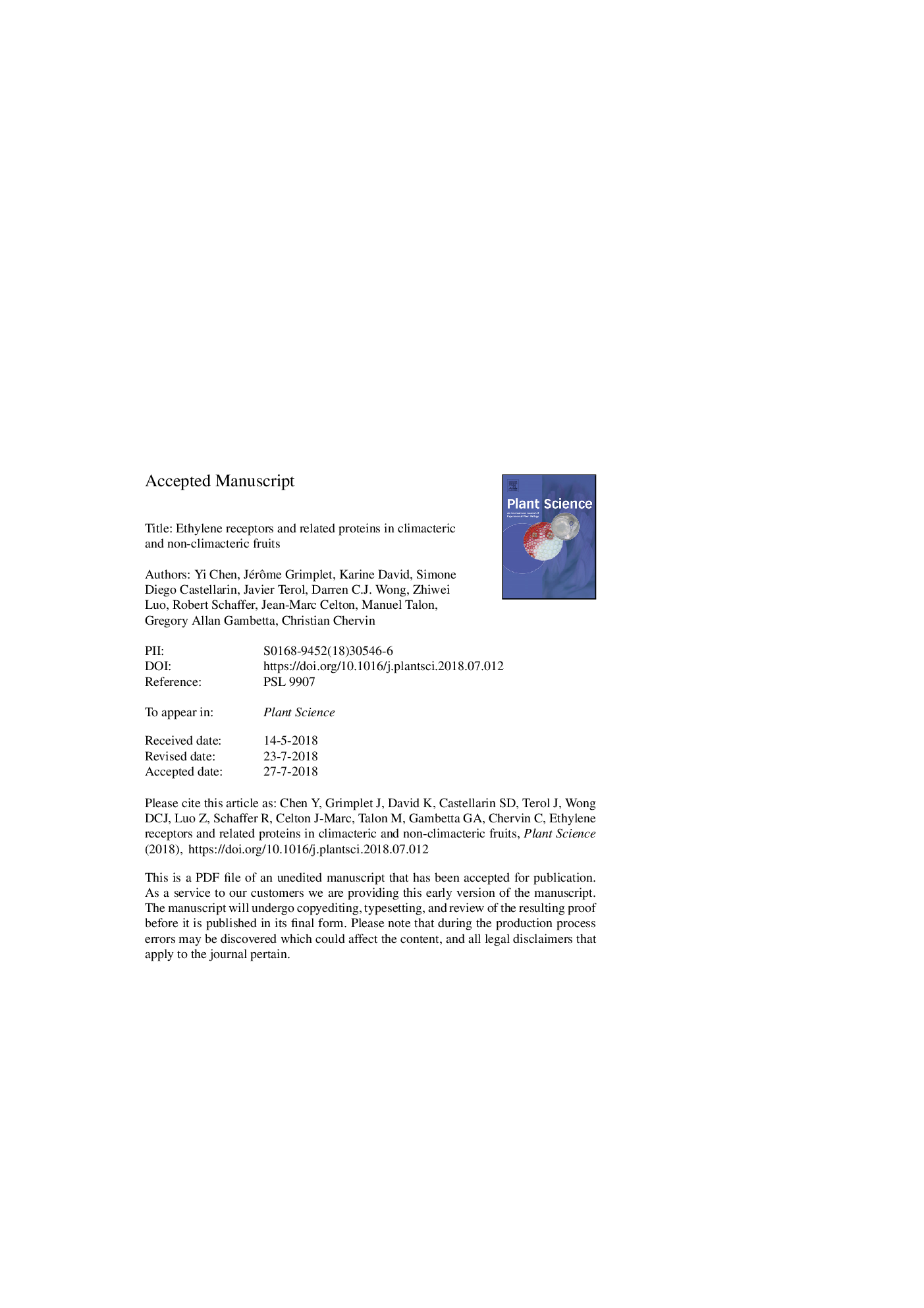| Article ID | Journal | Published Year | Pages | File Type |
|---|---|---|---|---|
| 8356059 | Plant Science | 2018 | 35 Pages |
Abstract
Fruits have been traditionally classified into two categories based on their capacity to produce and respond to ethylene during ripening. Fruits whose ripening is associated to a peak of ethylene production and a respiration burst are referred to as climacteric, while those that are not are referred to as non-climacteric. However, an increasing body of literature supports an important role for ethylene in the ripening of both climacteric and non-climacteric fruits. Genome and transcriptomic data have become available across a variety of fruits and we leverage these data to compare the structure and transcriptional regulation of the ethylene receptors and related proteins. Through the analysis of four economically important fruits, two climacteric (tomato and apple), and two non-climacteric (grape and citrus), this review compares the structure and transcriptional regulation of the ethylene receptors and related proteins in both types of fruit, establishing a basis for the annotation of ethylene-related genes. This analysis reveals two interesting differences between climacteric and non-climacteric fruit: i) a higher number of ETR genes are found in climacteric fruits, and ii) non-climacteric fruits are characterized by an earlier ETR expression peak relative to sugar accumulation.
Keywords
Related Topics
Life Sciences
Agricultural and Biological Sciences
Plant Science
Authors
Yi Chen, Jérôme Grimplet, Karine David, Simone Diego Castellarin, Javier Terol, Darren C.J. Wong, Zhiwei Luo, Robert Schaffer, Jean-Marc Celton, Manuel Talon, Gregory Alan Gambetta, Christian Chervin,
